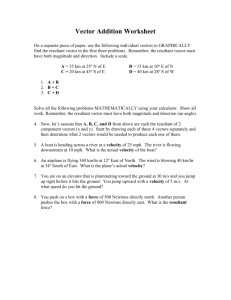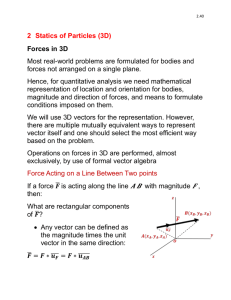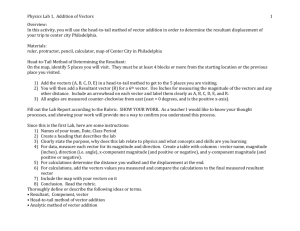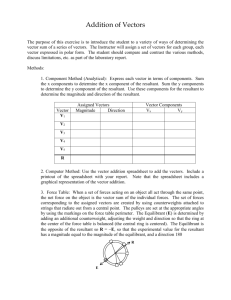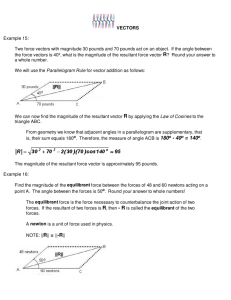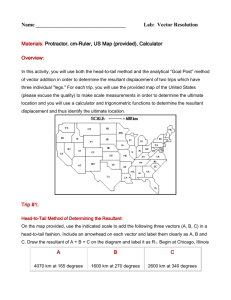Mapping Lab
advertisement
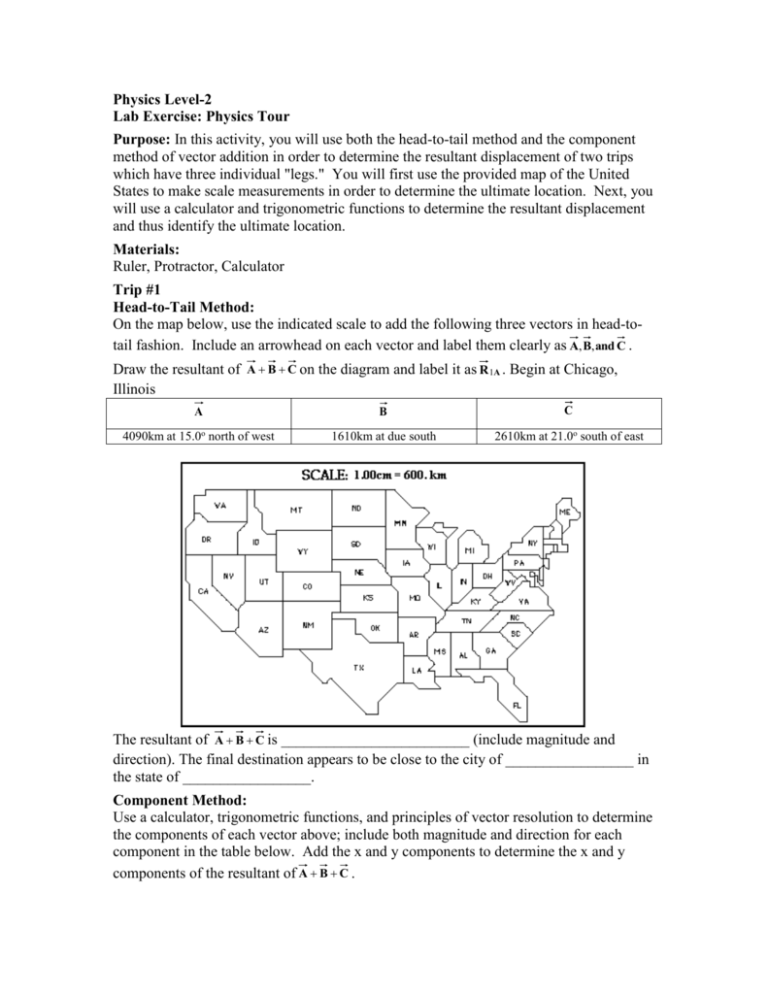
Physics Level-2 Lab Exercise: Physics Tour Purpose: In this activity, you will use both the head-to-tail method and the component method of vector addition in order to determine the resultant displacement of two trips which have three individual "legs." You will first use the provided map of the United States to make scale measurements in order to determine the ultimate location. Next, you will use a calculator and trigonometric functions to determine the resultant displacement and thus identify the ultimate location. Materials: Ruler, Protractor, Calculator Trip #1 Head-to-Tail Method: On the map below, use the indicated scale to add the following three vectors in head-totail fashion. Include an arrowhead on each vector and label them clearly as A, B, and C . Draw the resultant of A B C on the diagram and label it as R 1A . Begin at Chicago, Illinois A B C 4090km at 15.0o north of west 1610km at due south 2610km at 21.0o south of east The resultant of A B C is _________________________ (include magnitude and direction). The final destination appears to be close to the city of _________________ in the state of _________________. Component Method: Use a calculator, trigonometric functions, and principles of vector resolution to determine the components of each vector above; include both magnitude and direction for each component in the table below. Add the x and y components to determine the x and y components of the resultant of A B C . Vector x component y component A B C R 1B Determine the magnitude and direction of the resultant, R 1B , using the components in the table above, sketch the vector R 1B on the map above. As found by the analytical method, the resultant of A B C is _____________________ (include magnitude and direction). The final destination appears to be close to the city of _________________ in the state of _________________. Trip #2 On the map below, use the indicated scale to add the following three vectors in head-totail fashion. Include an arrowhead on each vector and label them clearly as D, E, and F . Draw the resultant of D E F on the diagram and label it as R 2A . Begin at Chicago, Illinois D E F 1610km at 21.0o west of south 1270km at 10.0o south of east 2040km at 68.0o north of east The resultant of D E F is _________________________ (include magnitude and direction). The final destination appears to be close to the city of _________________ in the state of _________________. Component Method: Use a calculator, trigonometric functions, and principles of vector resolution to determine the components of each vector above; include both magnitude and direction for each component in the table below. Add the x and y components to determine the x and y components of the resultant of D E F . Vector x component y component D E F R 2B Determine the magnitude and direction of the resultant, R 2B , using the components in the table above, sketch the vector R 2B on the map above. As found by the analytical method, the resultant of D E F is ____________________ (include magnitude and direction). The final destination appears to be close to the city of _________________ in the state of _________________. Conclusion: With a few sentences, compare the results of the two methods of vector addition and evaluate the effectiveness of the methods and the accuracy of your measurements.


